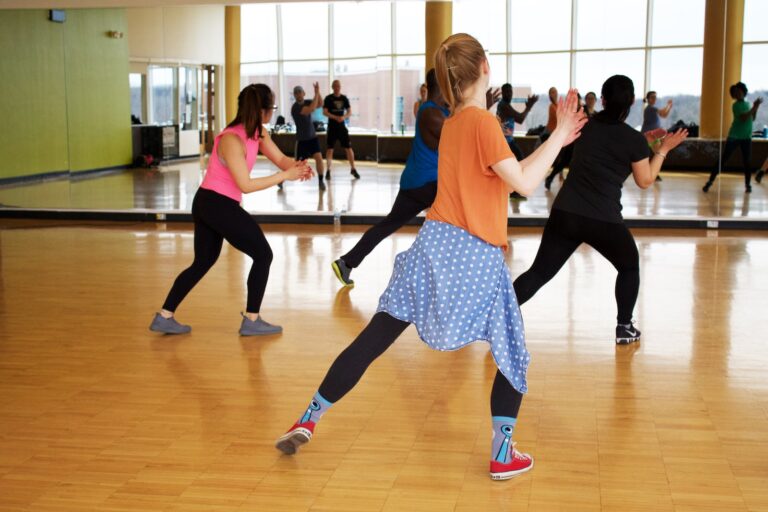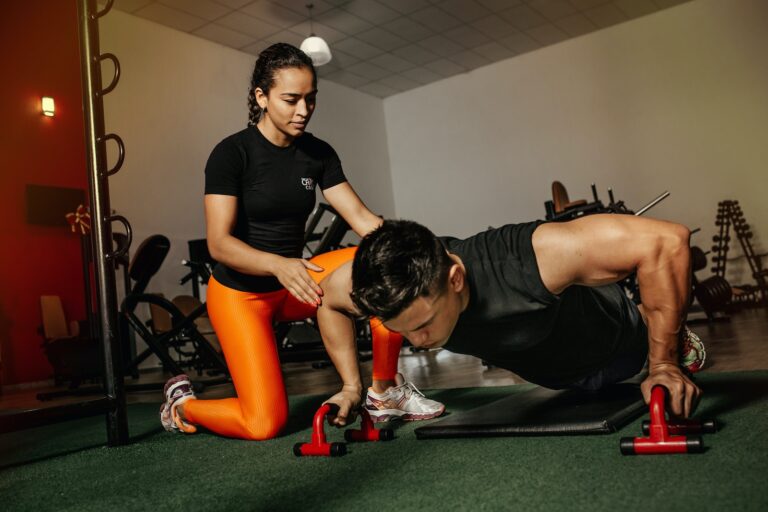A Beginner's Guide to Resistance Band Workouts
Unlock your potential and take your fitness routine to the next level with resistance band workouts! Whether you’re a fitness enthusiast or just starting out, incorporating resistance bands into your exercises can provide endless benefits for building strength, increasing flexibility, and improving overall health.
In this beginner’s guide, we’ll show you everything you need to know about resistance bands – from choosing the right one for your needs to performing effective workouts that will leave you feeling powerful and energized. Are you ready? Let’s get started on this exciting journey together!
Introduction to Resistance Band Workouts

If you’re looking for a workout that you can do anywhere, anytime, resistance bands are a great option. Whether you’re a beginner or a seasoned fitness pro, there’s a resistance band workout for you.
Resistance bands are great because they’re portable, affordable, and versatile. You can use them for strength training, cardio, flexibility, and more.
There are different types of resistance bands available, so you can find the perfect one for your needs. The most common type is the flat latex band, but there are also looped bands and tube bands.
When it comes to resistance band workouts, the sky’s the limit. You can do traditional exercises like bicep curls and lunges, or get creative and try something new.
Not sure where to start? Check out our beginner’s guide to resistance band workouts below.
Benefits of Resistance Band Workouts
Resistance band workouts offer a variety of benefits for both beginner and experienced exercisers. They are a great way to add resistance to your workout without the need for weights or other equipment. Resistance band workouts can be done anywhere, making them convenient for those who travel or have limited space.
Benefits of resistance band workouts include increased muscle strength, improved flexibility, and better joint stability. Resistance band workouts are also low impact, so they are gentle on the joints and muscles. Beginner exercisers can start with simple exercises and progress to more challenging ones as they become more comfortable with the bands.
If you are looking for a new way to workout, give resistance bands a try. You may be surprised at how much fun they are and how quickly you see results.
Types of Resistance Bands and Their Uses
There are four main types of resistance bands: loop bands, tube bands, flatbands, and yoga bands. Each type of band has a different purpose and can be used in a variety of ways to target different muscle groups.
Loop Bands: Loop bands are the most versatile type of resistance band. They can be used for a variety of exercises, including upper body, lower body, and core exercises. Loopbands come in different sizes, so you can choose the level of resistance that is right for you.
Tube Bands: Tube bands are great for targeted exercises and isolated muscle groups. They typically have handles on each end, which makes them easy to grip and helps to provide stability during your workout. You can use tube bands for arm exercises, leg exercises, and even some core exercises.
Flatbands: Flatbands are just what they sound like-flat pieces of elastic material that provide resistance when stretched. They are often used in combination with other fitness equipment, such as dumbbells or barbells, to add extra resistance to your workout. However, they can also be used on their own for a variety of exercises, such as pulling or pushing motions.
Yoga Bands: Yoga bands are similar to loop bands but are usually thinner and have less resistance. They are often used in yoga or pilates classes to help with stretching and toning muscles. However, they can also be used for a variety of other exercises outside of class.
Proper Form and Techniques for Resistance Band Exercises
There are a few key things to keep in mind when using resistance bands for workouts.
First, proper form is essential. When performing exercises with resistance bands, be sure to maintain good form and technique. This will help prevent injury and ensure that you are getting the most out of your workout.
Second, make sure to use the appropriate resistance band for your fitness level. If you are new to working out with resistance bands, start with a light-resistance band. As you become more familiar and comfortable with the exercises, you can move up to a stronger band.
Finally, be sure to warm up before starting your resistance band workout. A short 5-10 minute warm-up will help get your muscles ready for the workout ahead.
If you follow these simple tips, you’ll be on your way to getting the most out of your resistance band workouts!
Sample Resistance Band Workouts
Resistance bands are a great way to get a workout without having to go to the gym. There are many different ways to use resistance bands, and they can be used for a variety of different workouts. Here are some sample workouts that you can do with resistance bands:
1) Resistance Band Squats:
Stand with your feet shoulder-width apart and place a resistance band around your legs just above your knees. Squat down until your thighs are parallel to the ground, then press back up to the starting position. Do 3 sets of 10-12 reps.
2) Resistance Band Rows:
Anchor a resistance band at ankle level to something sturdy, like a heavy piece of furniture. Step back until there is tension on the band, then row the band towards your chest, keeping your back straight. Return to the starting position and repeat. Do 3 sets of 10-12 reps.
3) Resistance Band Push-Ups:
Place a resistance band around your back and under your arms. Lower to the ground into a push-up position and then press up. Do 3 sets of 10-12 reps.
4) Resistance Band Lateral Walks:
Place a resistance band just above your knees. Start with feet shoulder width apart and take a step out to the side with one leg, then follow with the other leg, maintaining tension on the band. Do 15 steps in each direction for 3 sets.
Safety Tips for Using Resistance Bands
Resistance bands are a great way to add resistance to your workouts without adding weight, but they can also be dangerous if used improperly. Here are some safety tips to keep in mind when using resistance bands:
- Never use a resistance band without proper instruction from a certified fitness professional.
- Always inspect your resistance band before each use to make sure it is not damaged or worn.
- When attaching a resistance band to a door or other anchor point, make sure the anchor is secure and will not slip or move during your workout.
- Start with lighter resistance bands and increase the level of resistance as you get stronger.
- never stretch a resistance band more than twice its original length.
- when finished with your workout, safely release the tension on the band before removing it from your body or the anchor point.
Alternatives to Resistance Band Workouts
There are a number of alternative exercises that can be performed with resistance bands. These include squats, lunges, biceps curls, triceps extensions, and rows. These exercises can be performed with either light or heavy resistance bands, depending on your fitness level.
If you are new to resistance band workouts, start with light resistance and perform 2-3 sets of 10-15 repetitions. As you get stronger, you can move up to heavier resistance bands and increase the number of sets and reps.
If you don’t have access to resistance bands, there are a number of other exercises that can be done to build strength and muscle. Bodyweight exercises such as pushups, pullups, and situps are all excellent alternatives to resistance band workouts. Additionally, lifting free weights or using weight machines at the gym are also great options.
Conclusion
As you can see, resistance bands are a great way to get into fitness and start exercising. With their portability and low-impact nature, they provide an excellent option for those just starting out with exercise or looking for something to supplement traditional gym workouts. We hope that this guide has helped you understand how to use your resistance bands safely and effectively to achieve your goals—whether you’re looking for strength training, cardio conditioning or flexibility gains!







3 Comments